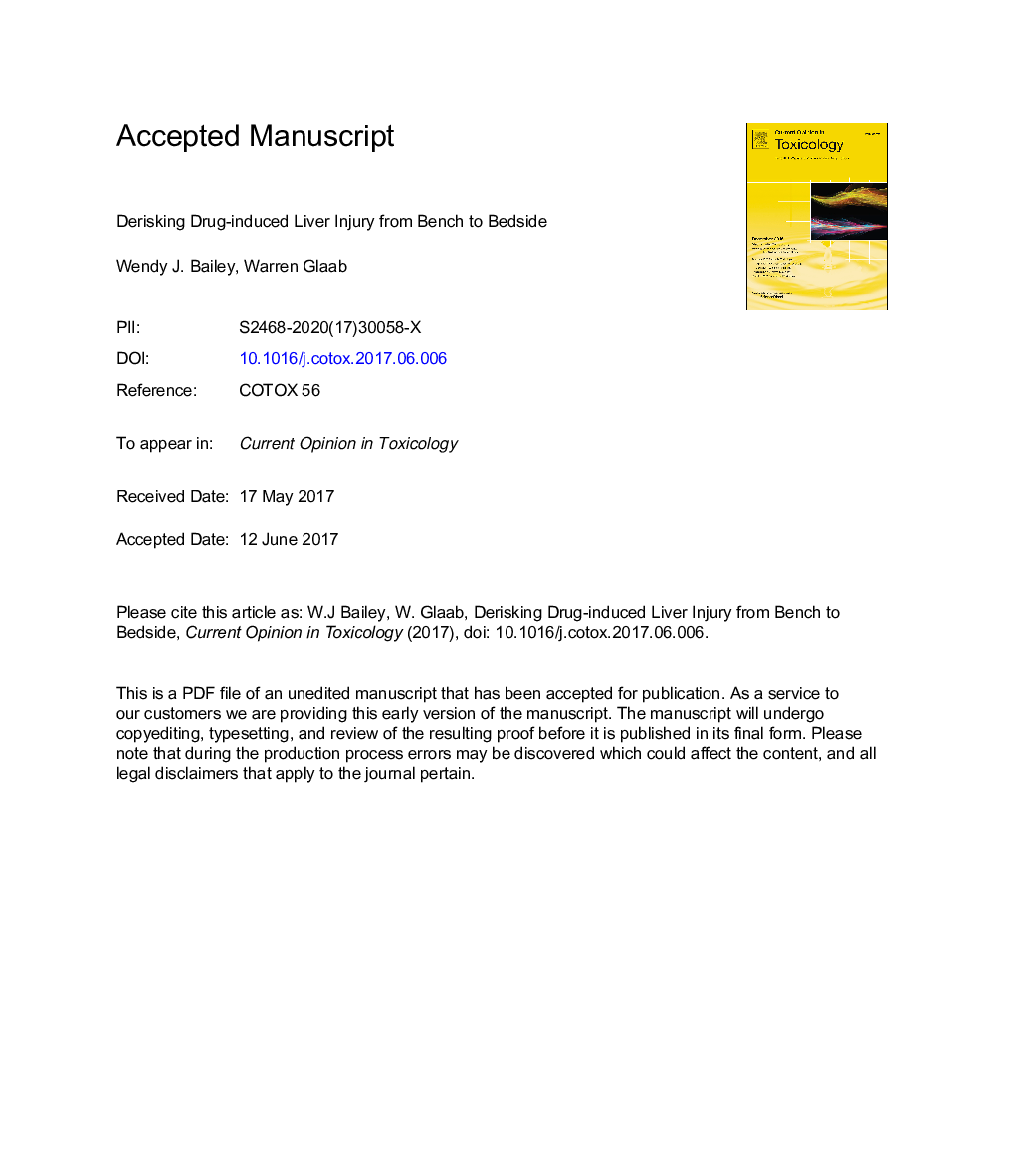| Article ID | Journal | Published Year | Pages | File Type |
|---|---|---|---|---|
| 8920247 | Current Opinion in Toxicology | 2017 | 22 Pages |
Abstract
In the world of translational biomarkers, the bar is high for qualification of improved indicators of liver injury. A 'holy grail' of translational biomarkers with respect to drug-induced liver injury (DILI) will be the discovery, evaluation, and qualification of those that provide accurate prognoses regarding individuals that will go on to experience liver failure from those that recover given modest increases in ALT, AST and total bilirubin (TBL). The performance of these well-established liver function tests (LFT) is quite good in terms of sensitivity for diagnosing liver injury, but opportunities exist for developing specific indicators of injury and better prognostic biomarkers of liver failure. Presently, in the absence of novel qualified translational biomarkers, the challenge for drug discovery is to minimize, and ideally eliminate, late stage drug failures due to DILI signals that may or may not indicate life threatening injury. This will be achieved through the application of novel in vitro and in vivo models utilized early in the drug development process. Predictive structure activity relationship (SAR) models are being developed by leveraging data from these novel tools with clinical outcomes. Mechanistic insights to the underlying biological processes that initiate adverse clinical DILI are being elucidated and used to design better molecules with a higher probability of success while decreasing cost and time to market. In addition to the near term gains of acquiring these mechanistic insights, this enhanced understanding could result in novel translational biomarkers with improved diagnostic and prognostic power over ALT/AST and TBL alone resulting in safer drugs while ensuring patient safety.
Related Topics
Life Sciences
Biochemistry, Genetics and Molecular Biology
Biochemistry
Authors
Wendy J. Bailey, Warren Glaab,
